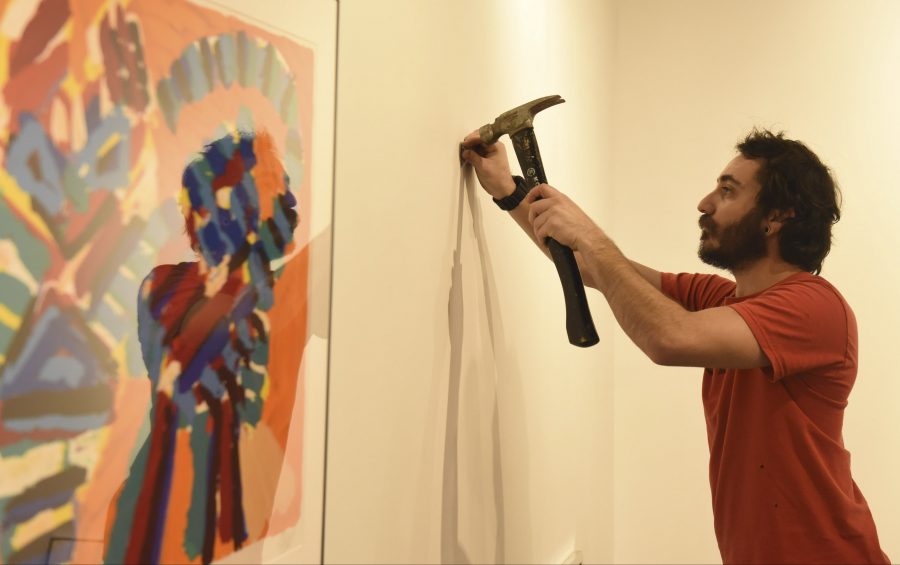University Museum slated to reopen by Jan. 1
October 26, 2017
In his State of the University speech in September, Chancellor Carlo Montemagno announced the University Museum will be reopening by Jan. 1.
Some of the museum’s ex-employees say that timeline is unrealistic.
“We are starting out with nothing,” Kasey Dann, a former museum student worker, said. “We have no staff.”
Advertisement
Another student worker, Dakota Evans, said a single semester isn’t enough time to plan for exhibits and rebuilding staff.
“A lot of research goes into it and planning it,” Evans, a senior from Marion studying anthropology, said.
The museum closed indefinitely over the summer due to budget cuts. After it shut down in June, anthropology curator Susannah Munson was the only employee left; Alison Erazmus, the former curator of exhibits, was let go in the spring of 2017, and museum educator Jo Nast had been let go the fall semester before that, Dann said.
Dann, a senior from Chicago studying art, said those layoffs meant unfinished work, like recordkeeping for the museum’s archives, had to be completed by students.
John Pollitz, the dean of library affairs and current overseer for the museum, said the museum will definitely be reopened to the public by summer, but ideally it will be ready by spring.
The first goal of the reopening effort is to rehire staff, Pollitz said.
Associate Provost David was tasked with collaborating with Pollitz to create a plan for the reopening after Montemagno decided to move the museum’s administrative location from the College of Liberal Arts to Library Affairs.
Advertisement*
Dilalla said the move is a good thing because it fits in with the library’s special collections, where Dann now works, and it will provide “synergy” between the library and the museum.
Though he couldn’t say the amount of money allocated to the museum’s reopening, DiLalla said the curator of exhibits position will be filled with a minimum salary of $40,284 annually and a maximum of $60,432 annually.
After re-staffing the museum, including filling the vacant exhibit curator position, Pollitz said they will start planning exhibits.
Ultimately, DiLalla said the administration wants to get the museum back to the state it was in during the spring of 2017 semester, acknowledging the museum was not at its peak last spring, but calling it a starting point.
“We know that for the museum to be successful long term, we have to have a director position,” DiLalla said.
The director position was left vacant when Dona Bachman retired in January, and Dilalla said they are in the process of setting up a search to fill the spot.
He and Pollitz are working together to gather funds and resources in order for the museum to reopen, DiLalla said.
Dilalla said it will be important to rehire an educational outreach coordinator, the position that previously organized an annual educational festival at the museum.
The Art Educational Festival brought local elementary schools to the museum to use artifacts and exhibits to teach children.
“Canceling the educational festival was a blow to the community,” Dann said. “We taught those kids.”
Since the museum student workers would create lessons plans using collections, Dann said the festival was also an experiential learning opportunity for them.
The last Art Educational Festival took place in fall of 2015 and was organized by two graduate students. One of them was the current museum archivist, Addison De Lisle, a master’s student from Maine studying metalsmithing and blacksmithing.
Pollitz said his next major priority after rehiring staff is to get the festival up and running again.
“It’s not only a good thing to display art to students and get students about art, but it’s really important to me to get kids on campus,” Pollitz said.
The University Museum, which first opened in 1874, has over 70,000 artifacts now residing in the McLafferty Annex.
When the museum closed, staff and student workers were responsible for emptying the museum and putting items in storage, Dann said.
Some of these artifacts include vases from the Ming Dynasty, several Andy Warhol prints and polaroids and Volvo’s art collection of 50 pieces.
Dann said the museum is important for the rural communities surrounding the university because not everyone is able to go to Chicago or St. Louis to see art and artifacts.
“People care about us,” Dann said. “You end up giving back to the community because it’s a cultural thing.”
Dann said the museum is also important for SIU students.
“As an artist, a museum professional, a museum studies student and an art historian, the access to materials I get is phenomenal,” Dann said. “It’s stuff you can’t just see on the street.”
When the museum is reopened, Evans said he and Dann will likely help out again.
“We’ll probably come back,” Evans said. “We can help it along to where it’s not as challenging as it could be.”
Evans said he hopes the administration protects the museum from now on.
“Art and history are important and should be defended,” Evans said.
Staff writer Amelia Blakely can be reached at [email protected] or on Twitter @AmeilaBlakely.
To stay up to date with all your southern Illinois news, follow the Daily Egyptian on Facebook and Twitter.
Advertisement








